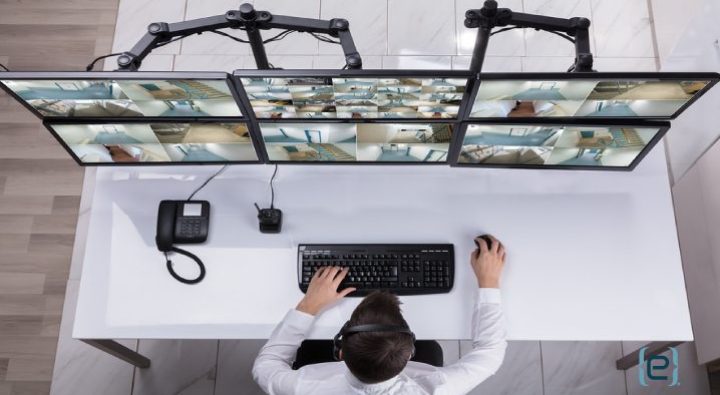Multiple Computer Monitors: Advantages and Disadvantages
used with permission from SBA.gov
by Anita Campbell
Are you looking to increase productivity in your small business? Some entrepreneurs and professionals find it helpful to have access to multiple computer monitors. This type of setup can potentially improve collaboration, productivity and even location flexibility. But there are also some potential drawbacks, from money and space constraints to the potential for distractions. If you’re considering investing in dual monitors for your own office, here are some of the pros and cons to consider.
Pros of Using Multiple Computer Monitors
Easy Switching Between Programs
As you work to grow your business, you’ll likely need to use multiple programs to perform your daily operations, from internet browsers to presentation builders to bookkeeping software. Constantly switching back and forth between those tools can take up valuable time and lead to confusion. Multiple monitors are especially popular with designers and coders who often switch between programs and applications. This type of setup allows you to work in PhotoShop and Illustrator simultaneously without constantly having to click out of each one. Or for developers, the second screen could come in handy to preview changes while editing code on the other.
Improved Communication
According to a recent study from IWG, 70 percent of professionals work remotely at least one day per week. And with those changing work environments, Skype, Zoom, and similar video conferencing programs have become a major component of the workplace. With one screen, you would need to constantly click away from your video chat program if you need to reference important documents during your call. But with multiple screens, you can keep that chat window open for the whole conversation while still referencing all of your necessary materials on the other monitor.
Flexible Workspaces
Dual monitors can also be useful for those professionals that work mainly on a laptop, but also need to occasionally work on more in-depth projects. For an example, a web developer could handle most of their admin work on their laptop as they travel or work from their favorite coffee shop. But then when they’re finishing up editing a large project, they can plug their laptop into the extra monitor to make sure they have a comprehensive view before submitting it to a client. According to a Business.com survey, almost 73 percent of small business owners use laptops. So this option could be useful to a lot of entrepreneurs.
Cons of Using Multiple Computer Monitors
Added Costs
Using an additional monitor does require you to purchase some extra equipment. Aside from the monitor itself, you may also need a stand and some other accessories to get your desk to function the way you want it. It’s not necessarily a huge expense, as you can sometimes find monitors for as little as $100. But for solopreneurs or brand new businesses without a lot of resources, it can be difficult to dedicate finances to creating this type of setup.
Less Desk Space
Two monitors are obviously going to take up more space on a desk than one monitor. Modern monitors aren’t necessarily as bulky as older options, but they do still leave you with less space for documents, planners and other items. Unless you’re a total neat freak, it can be really easy for whatever small amount of your desktop is leftover to get very cluttered. And according to a study out of the University of New Mexico, a cluttered environment can lead to less efficient thinking, poorer mental health and a host of other issues. Depending on the size of your current desk, this setup can also require you to purchase a new one, which represents another possible expense.
More Opportunity for Distractions
One of the things that draws many people to the idea of dual monitors is the thought that it could help them multitask. But for many, that would simply mean working on one monitor and having the other constantly focused on email or social media. In most cases, all of those notifications and messages are really only going to distract you from the task at hand. Furthermore, scientists have found that multitasking isn’t even an effective strategy.
MIT neuroscientist Earl Miller said in an interview with The Guardian, “When people think they’re multitasking, they’re actually just switching from one task to another very rapidly. And every time they do, there’s a cognitive cost in doing so.”
To learn more, contact us today.







